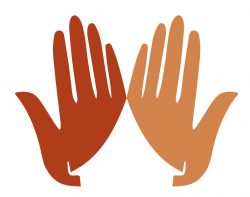Read the transcript below or listen to the recording here
So, here’s a question. Give me two mind states that we all have in common, everyday.
Mindfulness is of course challenging us to exist fully and completely in the present moment, noticing things exactly as they are. What is it that takes us away from this? Well, in our modern world there are many things but two of the main mental activities are waiting and rushing.
Just dwell on the feeling of these two mind states for a minute. Just think about where your mind is, when you are engaged in either of these.
These two are rather contradictory when you think about it. One, waiting, leaves us feeling rather static. As if we are stalled and can’t move on until whatever it is that we are waiting for, arrives. The other has a sense of movement about it. We aren’t going to be in a satisfactory, contented state until we get somewhere or complete something.
If we look at waiting first. Just spend a day spending time noticing how much we tend to spend waiting. Even seemingly inconsequential things we wait for. A lot of what we wait for isn’t actually going to create long term contentment. It is satisfying a very short term desire. How long do we spend waiting for the kettle to boil? How long do we spend waiting for our PC’s to wake up? Call backs, emails etc. So much time spent waiting. But we can be a great deal more subtle than this if we really apply mindfulness and pay attention. Notice how the mind works sometimes. How we are working on a particular mental problem. Searching for a solution perhaps. Low and behold hidden in there, we find waiting. We find our selves waiting for the right mental answers to appear in our minds? Waiting for our thoughts to give us the answers. However, if we pay attention and become mindful we find that the mind doesn’t work like that. Answers aren’t presented to us because we have waited for the mind to finish its processing. Instead, answers are presented to us out the beautiful chaos of the mind. Almost being served up out of nowhere. So why are we waiting. And, of course, when we are waiting, the mind is thinking about the thing we are waiting for. It isn’t present. It is painting a picture of a future time when the thing we are waiting for has arrived.
Remember what it was like when we were kids waiting for Christmas? We’d paint a picture in our minds of life with all those lovely presents we’d put on our Christmas list. How painful that felt!
A lot of waiting carries with it strong emotion. Anxiety and worry are generally exaggerated by the waiting process. What are we doing when we wait for something that is carrying with it worry or anxiety. The mind of course, is firing up and concentrating on the perceived problem. Generally it is rolling the story behind the problem around and around, trying to find a way out of the worry and anxiety and find a solution perhaps. So the story is replayed over and over again. Of course when we do this, the mind then further encourages the emotion to develop and the worry and anxiety deepens. Potentially, if this continues it can lead to real suffering.
Actually, if we can develop a habit of mindfulness, then waiting presents us with an opportunity for practise. If there is truly nothing else to do while we wait, then why not meditate? Then, magically, because the mind is just being in the present moment, it is no longer painting that picture of life when the waited for event arrives. It is merely being present. Magically, we are then no longer waiting!
Tai Chi teaches us something about waiting. The practise of tai chi takes time. It is complex and we won’t make progress without practise. When we practise our form, there is nothing to wait for. We can’t ‘wait’ for the expertise to come. We have to practise. Waiting makes no sense in the Tai Chi world. Nor in meditation. Meditation isn’t waiting, it is active involvement and practice of the present moment.
So to practise with waiting, we must first start to observe what happens when we are waiting. What we are waiting for and what the mind feels like. What mental objects are flowing through and what emotions are being triggered. Lo and behold, if we do this, we are no longer waiting. We are now doing something useful. The waiting itself has become a meditation subject and we can study with interest.
So what of rushing? The two are related sometimes. We rush because we think the thing we are waiting for will happen faster if we push it to through rushing. So here again, we are rushing because we believe we will get to a contented place quicker. We can take a look at the things we are rushing for and ask ourselves if they will leave us content. There are times where we have to move fast. If we are in a profession where some degree of speed is needed, then clearly we have to apply it. A surgeon saving a patients life sometimes has to apply speed to make sure they don’t lose the patient. A racing driver would not be very good at their job if they didn’t have an element of ‘rushing’ about themselves! But, we won’t need to do this all the time. We need to take care that our life doesn’t disappear for us because we rush right through it. Rushing can be all consuming. When we are rushing we can literally lose our minds! It’s an interesting expression that. Lose our minds. For me this implies that we lose every little bit of self awareness. The mind is totally and utterly caught up in the thing we are rushing for. We are not even aware of the rushing!
Again, Tai Chi teaches us some good lessons here. Tai Chi is practised slow for a reason. To understand and truly feel the principles that are working under the surface. However, once we start to get familiar with Tai Chi, then we notice the desire to speed up enter the mind. As my students will tell you. The advice I always give here is that when the desire to go faster enters the mind, go slower. When we don’t have to rush, why rush? Why not go slower and pay attention.
We can do the same with our mindfulness practise. Noticing when we are rushing, what happens when the desire to rush arises and to take a look at our emotional relationship with the thing we are rushing for. To truly ask the question, why are we rushing and what are we rushing for? That old question of “is this wholesome?” Is also a good one to ask. Listen to the dialogue in the mind. We will often hear ourselves arguing the case for our rushing. Are those arguments actually true? Is thee really a need to rush?
Again, when we work in this way, we are bringing the mind back to the present. We aren’t thinking about the thing we are rushing for. We are being fully present as we examine the nature of rushing. And again, the rushing immediately dissolves.
We also tend to find then that the clearer we think, as a result of letting the mind rest and open, the more we see that the reasons for the rushing were artificial.
So, we can bring both of these practises squarely in to our meditation to develop a practice of mind watching, relating to these two areas. During meditation both of these mind states can arise. We can be waiting for something to happen or we can find a desire for the meditation to progress quickly to some form of conclusion. Perhaps to a previous blissful state that we have experienced. We want to drive forward our meditation to achieve that state. Then we find that we are not truly paying attention to the moment. Our meditation has become all about achieving something. And we are either waiting for that or pushing ourselves to achieve it. When we see this, we recognise the state in our selves and we can simply relax and come fully present again.
Ajahn Jutindharo, when he visited us, spoke about his own progress in meditation. How he only really felt he started making progress, when he stopped trying. For me, it was a little different. It was when I stopped waiting for things to happen and stopped rushing from one stage of the meditation to the next. Now, when the meditation moves forward, I feel an almost reluctance to move on.
Tai Chi, again, carries an a similar experience. When we enjoy settling in to the postures, we can experience a gentle pull not to move on, but a desire to just settle into the ground. A deep peace settles in to each posture as you flow through the form.
Enjoy the meditation.

